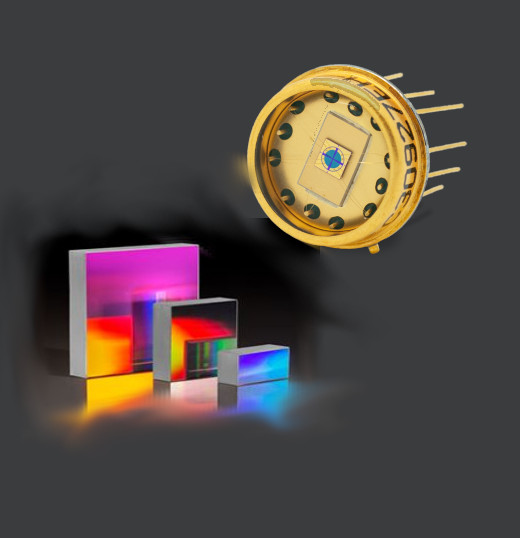
Photometric and Radiometric Terms: FLUX
In order to describe the sensitivity of photodetectors or the brightness of light sources, it is necessary to define the amount of light being emitted or detected in quantitative terms. Many individuals, when first exposed to these terms, experience a certain amount of confusion caused by the two systems of measurement, the photometric and the radiometric.
The photometric system defines light in terms of how it is perceived by the human eye. The eye’s sensitivity is dependent on the wavelength of color of the light. Peak sensitivity occurs in the green part of the visible spectrum while the eye’s response to infrared or ultraviolet is zero.
The radiometric system describes light quantities in physical rather than eye response terms. The baseline detector used in the radiometric system has uniform sensitivity across the entire spectrum. Radiometric measurements can be made with thermopiles whose response does not vary with wavelength.
Both systems have their application. When specifying room lighting, it makes sense to use photometric units. However, if the application involves transmitting data over a beam of infrared light, the output of the light source and the sensitivity of the detector must be specified using radiometric units.

Relative Spectral Response of Photometric
Excelitas makes use of the symbol H, (the original term for radiant incidence) when specifying the lighting conditions under which its detectors are measured for sensitivity. This symbol appears regardless if photometric (fc) or radiometric (W/cm2) incidence is being specified.
TERM: Flux, Φ
DEFINITION: Rate of flow of energy (Q) to, from or through a surface

| Radiometric | Photometric | |
| NOMENCLATURE: | Φe | Φv |
| DESCRIPTION: | Radiant Flux (Radiant Power) | Luminous Intensity |
| EQUATION: | Φe = dQe / dt | Φv=dQv / dt |
| UNITS: | W, Watts | lm, lumens |
Article based on Application Notes from Excelitas Technologies Photometric and Radiometric Terms application note
Heard on the Internet
Imagination is more important than knowledge.
Albert Einstein






